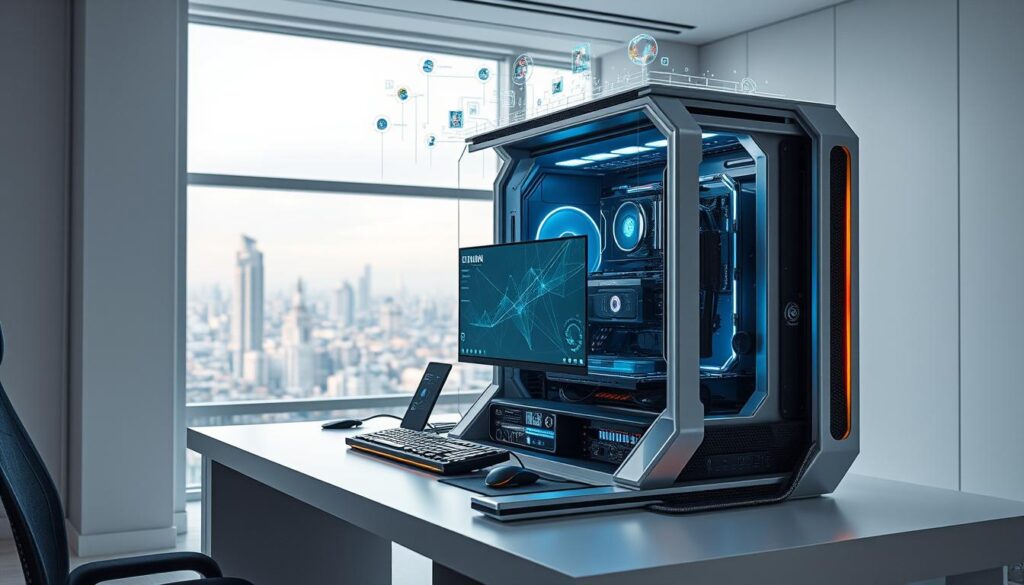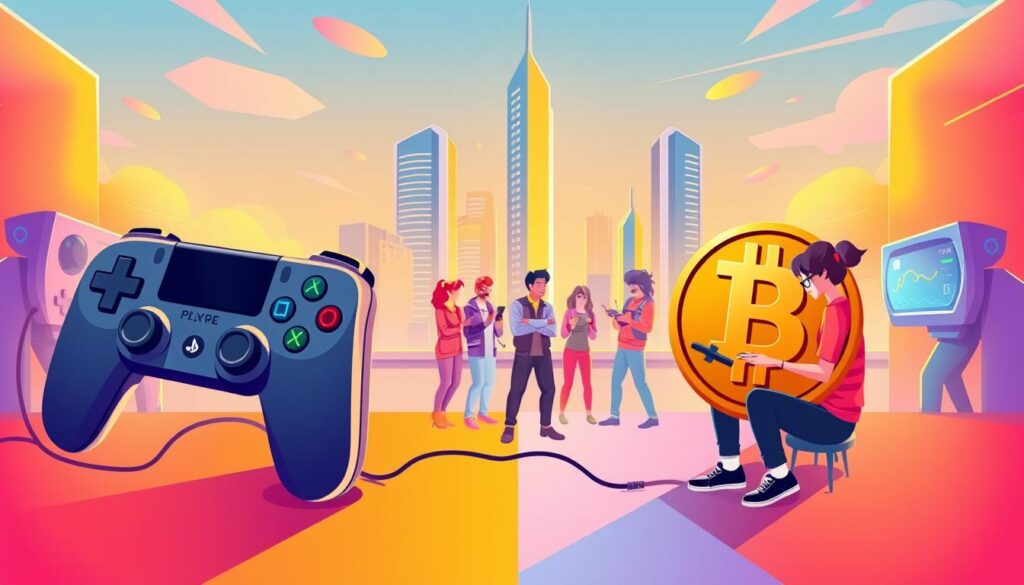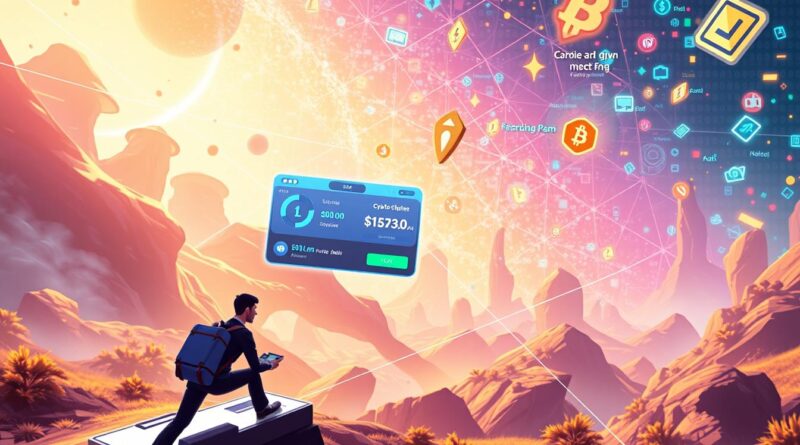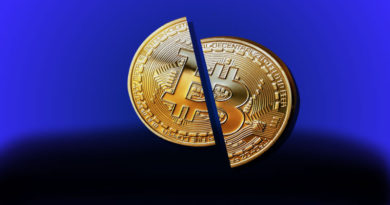Crypto Gaming & Play-to-Earn: Earn While You Play
Imagine earning over 135% more value in a single game like Fractalians. This shows how fast some Crypto Gaming & Play-to-Earn titles are growing. The global P2E market isn’t just a trend; it hit $3.29 billion in 2022 and could triple to over $8.8 billion by 2028.
This isn’t virtual play—it’s real money at stake. Titles like Axie Infinity, once home to 3 million monthly players, let users earn crypto through battles and quests. Yet even pioneers face challenges, like its $620 million hack in 2022. Games like Wild Forest and Astra Nova now offer 55% and 106% jumps, proving the sector’s volatility and huge growth.
Crypto Gaming & Play-to-Earn flips the script: instead of paying to play, players earn digital assets, NFTs, or cryptocurrencies. Platforms like Decentraland and The Sandbox let users own virtual land as NFTs, monetizing through sales or events. But risks loom—tokens like RavenQuest dropped 20%, while SolPlex fell 14%. For every winner, like Heroes of Mavia’s 31% rise, there are losers, such as CyberVerse’s 15% loss. This guide explores how blockchain games blend play and profit, the tools to navigate their markets, and why P2E is rewriting gaming’s rules.
Key Takeaways
- The P2E market grew from $3.29 billion in 2022 to a projected $8.8 billion by 2028.
- Fractalians saw a 135% surge, showing crypto games’ volatile but explosive growth.
- Axie Infinity’s $620 million hack highlights security risks in crypto gaming.
- Players can earn via NFTs, tokens like AXS/SLP, or partnerships with brands like Gucci and Snoop Dogg.
- Wild Forest and Astra Nova lead growth, but games like CyberVerse face steep declines.
What Is Crypto Gaming & Play-to-Earn (P2E)?
Crypto gaming combines blockchain tech with virtual adventures. Play-to-earn (P2E) lets players earn money through games. This is different from old games where you only spent money on items.
The Evolution from Traditional Gaming to P2E
Old games sold skins or subscriptions. P2E changed this, starting with Counterparty (2014) and Cryptokitties (2017). Now, games like Axie Infinity and Gods Unchained let players own their progress with NFTs.
- 2014: NFT trading cards debut in Counterparty
- 2017: Cryptokitties popularizes blockchain collectibles
- 2021: Axie Infinity reaches 2.5M daily players
How Blockchain Technology Powers P2E Games
Blockchain makes sure players own their assets. Unlike old games, blockchain gaming uses smart contracts for rewards. For example, Decentraland lets users buy virtual land as NFTs on Ethereum.
| Traditional Gaming | Blockchain Gaming |
|---|---|
| Centralized servers control assets | Decentralized ledgers ensure ownership |
| No asset resale value | NFTs can be sold on global marketplaces |
| No player revenue streams | Earnable $SLP/$AXS tokens in Axie Infinity |
The Role of NFTs in Crypto Gaming
In NFT games, every item is unique. Gods Unchained has over 13M NFTs, with 65,000+ collectors. These NFTs are everything from character skins to virtual real estate in Decentraland.
“Players now own assets, not just access codes.” – Blockchain Gaming Council
Key P2E categories include:
- DeFi Land: Farming and yield-generating games
- Splinterlands: Trading card games with NFT collectibles
- AAA web3 games like Alien Worlds with interoperable items
With decentralized gaming, players can earn money. This marks a new era where gaming is more than just fun—it’s a way to make money.
The Economics Behind Play-to-Earn Games
Play-to-earn games work on tokenomics to balance supply, demand, and player rewards. They use blockchain for cryptocurrency games and tokens. For example, Axie Infinity’s Small Love Potions (SLP) can be traded for real money on Uniswap.
- Players earn crypto rewards through quests, competitions, or breeding digital assets.
- Virtual land in games like Axie Infinity has sold for over $2 million, proving high-value NFT liquidity.
- Staking tokens in games like Sorare lets users earn passive income from digital assets.
| Revenue Stream | Example |
|---|---|
| Quests | Axie Infinity’s SLP tokens |
| NFT Trading | Rare digital cards in Sorare |
| Land Ownership | Axie Infinity virtual land sales |
Economic success depends on managing inflation and scarcity. High costs, like $500+ for Axie Infinity, can be a barrier. But, over 2.5 billion people could play these cryptocurrency games and earn. Keeping token prices stable and having good secondary markets is key for long-term success.
Players need to watch market trends to get the most crypto rewards. While there are risks like price changes, blockchain makes sure ownership is secure. The future of these games depends on improving token designs for fair, player-driven economies.
Top Play-to-Earn Games Dominating the Market
Play-to-earn games have changed how we play metaverse gaming and cryptocurrency games. These games give real rewards and push blockchain tech forward. Let’s look at the top games leading this exciting field.
Axie Infinity: The Pioneer of P2E Gaming
Axie Infinity started the play-to-earn model with Pokémon-like battles. Players raise and fight axies to earn SLP and AXS tokens. It has a big community, but it’s hard for new players to start because of the cost.
Decentraland & The Sandbox: Metaverse Gaming Platforms
These big names in the metaverse let users buy virtual land NFTs. Players can:
- Build and make money from 3D worlds in metaverse gaming
- Trade LAND or SAND tokens on crypto exchanges
- Work with brands like Atari and Snoop Dogg on The Sandbox
Decentraland’s MANA token rewards event hosting. Both platforms let users make money from digital land.
Gods Unchained: Blockchain Card Games
This cryptocurrency games standout is like Hearthstone but with $GODS token rewards. Players earn by winning duels without any cost. Its unique card system and trading marketplace make it stand out.
Other Games to Explore
New games like Illuvium (no start costs, ILV tokens), Splinterlands (strategy card battles), $Splinters), and Alien Worlds (mining crypto through VR) are getting popular. Each game has its own way to earn, from farming to crafting. This shows how diverse the P2E world is.
How to Get Started with Crypto Gaming

Starting your journey into blockchain-based gaming is easy. First, get a crypto wallet like MetaMask or Ronin Wallet. These wallets help keep your digital assets safe. They connect to blockchain networks for secure transactions in play and earn games.
Next, look into platforms like Decentraland or Axie Infinity. These games let you earn crypto by doing quests, battling, or managing virtual assets.
- Choose a game that interests you, whether it’s battling in RPGs or trading NFTs.
- Buy cryptocurrency (like ETH or SOL) for entry fees or to buy assets.
- Start with free starter packs or low-cost NFTs to get a feel for the game.
Security is very important. Use two-factor authentication and never share your wallet details. It’s also key to understand gas fees, the costs for blockchain transactions. Start small to avoid losing money. Join Discord or Twitter forums to learn from experienced players.
“Players can earn rewards by completing tasks such as winning battles, solving puzzles, or achieving milestones.”
Start with Axie Infinity, where new players can earn up to $20 daily. Use CoinMarketCap to check market trends and time your asset sales. Over 60% of gamers now focus on tokenomics before investing, according to surveys. Spread your investments across different games to reduce risk.
Remember, patience and research are key. Start small, join active communities, and keep up with game updates. The blockchain-based gaming world changes fast, but with these steps, you can enjoy a rewarding experience.
Understanding NFTs and Their Role in Decentralized Gaming
NFTs change how we own things in games. They make virtual items unique and tradable. In NFT games, these tokens are everything from character skins to land plots. They are stored safely on blockchain networks.
This makes decentralized gaming ecosystems where players own their digital stuff.
Creating, Buying, and Trading In-Game NFTs
Players can make new NFTs by achieving in-game goals or buy them on marketplaces. For example, Axie Infinity lets users breed creatures to make rare Axies. These can be sold for cryptocurrency.
Here are the main steps:
- Minting: Create NFTs by completing in-game challenges.
- Buying: Get items through platforms like OpenSea or game stores.
- Trading: Sell assets on secondary markets for profit or to use in other games.
NFT Marketplaces for Gamers
Marketplaces connect players and buyers. Here’s a look at top platforms:
| Platform | Focus | Key Features |
|---|---|---|
| OpenSea | General NFTs | Wide selection; supports Ethereum-based assets |
| Rarible | Creator-focused | Community governance; customizable sales |
| Axie Marketplace | Game-specific | Seamless Axie-related asset trading |
The Concept of Digital Ownership in Gaming
In decentralized gaming, players own NFTs, not developers. This means:
- No need to rely on developers to keep asset value
- Can move assets between games (interoperability)
- Assets are safe from server crashes or company shutdowns
“Blockchain ensures your digital belongings are yours alone.”
For example, a rare weapon in a fantasy NFT game keeps its value even if game rules change. This is different from traditional games where assets disappear if the game closes.
Potential Risks and Challenges in P2E Gaming

While Crypto Gaming & Play-to-Earn (P2E) offers rewards, it comes with real risks. The decentralized nature of blockchain gaming brings innovation and unpredictability.
- Upfront Costs: Games like Axie Infinity require expensive NFTs to begin, often costing hundreds of dollars. This creates barriers for players with lower incomes.
- Market Volatility: Token values tied to crypto markets can drop suddenly. For example, Axie’s SLP token lost 90% of its value in 2022, erasing earnings.
- Security Threats: Hacks, like the $625 million Ronin Bridge breach in 2022, show that smart contracts are vulnerable to exploitation.
- Regulatory Uncertainty: Countries like China banned crypto, disrupting P2E economies. Tax rules and gambling laws vary globally, making earnings complicated.
- Sustainability Issues: Some games rely on constant new player growth to keep rewards flowing. This risks collapse when growth slows.
“Over 60% of P2E projects fail within two years, often due to poor tokenomics,” reports a 2023 blockchain study.
Technical barriers also exist: high gas fees and slow transaction speeds frustrate users. Phishing scams target wallets, stealing assets from inexperienced players. Even NFTs, meant to guarantee ownership, lose value if a game’s community dwindles.
Players in developing nations, where P2E income is critical, face heightened risks. A 2022 study found 40% of Filipino P2E players lost savings due to token crashes. To mitigate risks, experts advise diversifying investments, verifying project teams, and staying informed about regulatory changes.
Despite its promise, blockchain gaming demands caution. Balancing the rewards with these challenges is key for sustainable participation.
The Future of Blockchain-Based Gaming
Blockchain-based gaming is changing how we enjoy and make money in games. By 2028, it’s expected to grow to over $8.8 billion. This growth is thanks to new tech like virtual reality and games that work on different platforms.
Emerging Trends Shaping the Industry
Some key trends include:
- Sustainable tokenomics to stop inflation and keep games alive for a long time.
- Free games with ways to earn money, making games more accessible.
- Top-quality games that use blockchain, drawing in more players.
- Metaverse games where you can use your assets in different worlds.
Corporate Giants Joining the Blockchain Revolution
Big companies are putting a lot of money into blockchain:
| Company | Blockchain Venture | Impact |
|---|---|---|
| Ubisoft | NFT collectibles for Tom Clancy’s Ghost Recon | Combining classic games with digital ownership. |
| Square Enix | P2E elements in Final Fantasy spin-offs | Introducing new ways to make money in games. |
| Epic Games | Metaverse gaming tools for developers | Making it easier to create blockchain games. |
Virtual Reality’s Role in Shaping the Metaverse
“VR will make metaverse gaming as immersive as real life.” – 2023 Report by Deloitte
By 2030, VR and AR could reach $450 billion, making metaverse games feel real. New tech is being developed to fix slow blockchain issues. This tech also aims to make games use less energy.
Even with challenges like security issues and rules, the industry is growing. In 2023, it got $4.5 billion in funding. Players are spending more time in VR games than in other types of games.
As Web3 grows, blockchain gaming might become the norm. It will mix making money with endless creativity.
How P2E Gaming Differs from Traditional Gaming Models

Crypto Gaming & Play-to-Earn (P2E) changes the game by giving players economic power. Unlike old games where you spend money without owning anything, P2E lets players earn real value. This is done through cryptocurrency games.
- Value Creation: Old games cost $40–$70 and have microtransactions. P2E rewards players with crypto and NFTs that can be traded for income.
- Asset Ownership: In old games, players rent assets. P2E uses blockchain to give true ownership of NFTs, which can be sold on decentralized markets.
- Rewards: Old models offer no earnings beyond in-game items. P2E gamers earn crypto, with some making $2,000–$3,000 monthly in peak periods.
| Aspect | Traditional Gaming | P2E Gaming |
|---|---|---|
| Ownership | Players lease assets | NFTs grant full ownership |
| Earnings | No real-world rewards | Earn crypto/NFTs tradable for cash |
| Monetization | Microtransactions ($50–$100/year) | NFT sales, token economies |
| Player Role | Consumer | Co-creator and investor |
Old games keep players in a cycle of spending to play or win. P2E changes this by letting players profit from their time and investments. While crypto gaming starts with costs (like buying NFTs for Axie Infinity), it’s a big change from old models.
Success Stories: Players Earning Real Income Through Cryptocurrency Games
Players all over the world are making real money from crypto rewards in NFT games. Their stories show how hard work and skill can turn online wins into cash. It’s a journey from virtual victories to real-life earnings.
Case Studies of Full-Time P2E Gamers
“To make a steady income, treat gaming as a job, not a hobby,” advises a gamer who makes $2,000 a month from NFT games like Axie Infinity. Gamers in the Philippines and Brazil have found ways to live off their gaming. They do this by playing regularly, trading assets, and getting involved in their gaming communities.
Earning Capacity in Various Games
| Game | Average Monthly Earnings | Key Strategies |
|---|---|---|
| Axie Infinity | $500–$2,000 | Breeding NFT creatures, daily quests |
| Decentraland | $300–$1,500 | Landing sales, virtual real estate |
| Splinterlands | $100–$800 | Card trading, tournament participation |
Strategies for Maximizing Crypto Rewards
- Join guilds to access starter kits and scholarships
- Specialize in high-value NFT games like land management in The Sandbox
- Track token price trends to optimize selling
- Invest in cross-game portfolios to reduce risk
Those who succeed often combine gaming with DeFi yield farming to boost their earnings. Even with ups and downs in the market, these tactics prove that P2E can be a reliable source of income for those who are proactive.
Conclusion: Is Play-to-Earn Gaming Right for You?
Choosing the right Play-to-Earn (P2E) game depends on what you value most. Blockchain gaming lets you earn cryptocurrencies and NFTs. But, success also depends on upfront costs, how much you enjoy playing, and being part of a community.
Games like Axie Infinity require big investments at the start. Others are more accessible. Think about your financial situation before starting. Players in places like the Philippines might earn from P2E, but the crypto market can be unpredictable.
What do you want to achieve? If you just want to have fun, look for free games. Investors might aim for valuable NFTs in places like Decentraland or The Sandbox. You also need to know how to handle crypto wallets and blockchain basics.
Even if you’re not tech-savvy, learning about game economies and asset risks is key. This way, you can avoid losing money.
The future of blockchain gaming depends on making it easier to access and regulating it better. With the global gaming market reaching $455 billion, P2E’s appeal is growing. But, there are hurdles like unclear rules.
Start with low-risk games or join communities for advice. See P2E as a way to earn extra, not a surefire way to make money. With smart planning, blockchain gaming can meet your entertainment and financial needs, if you handle risks wisely.




